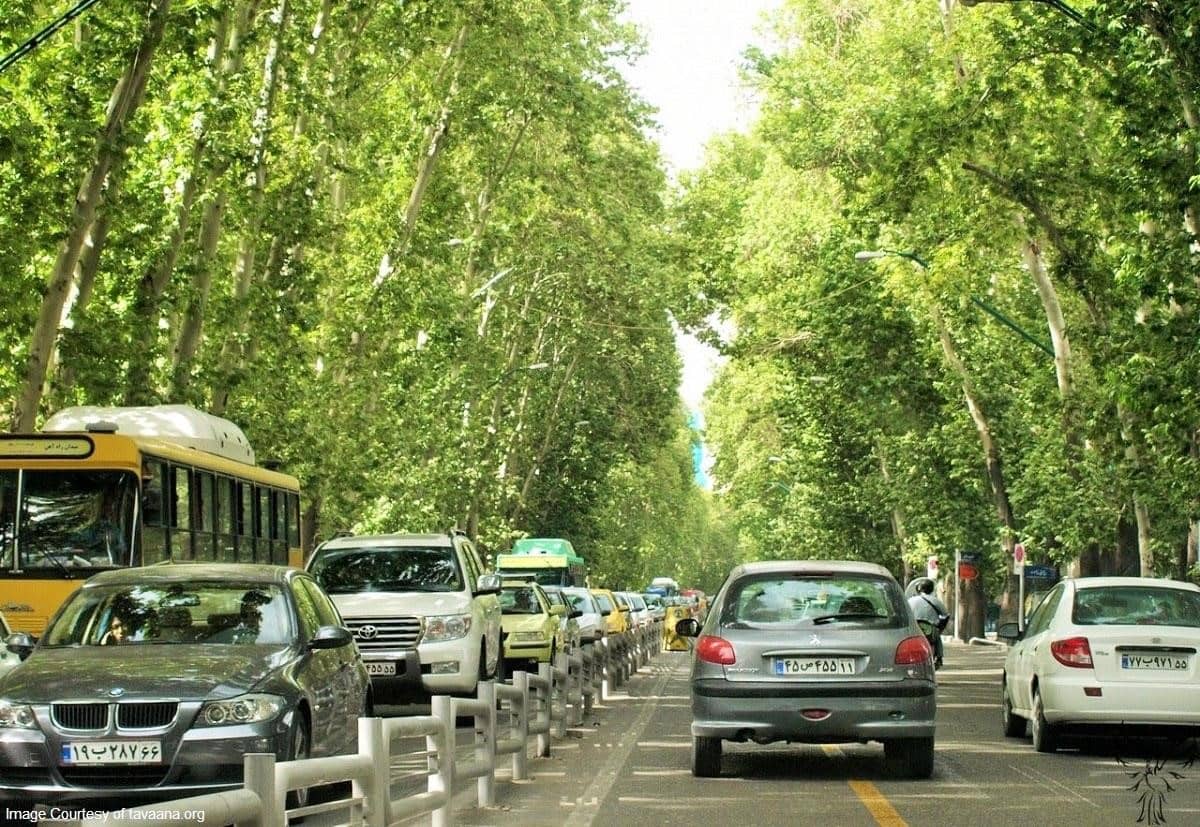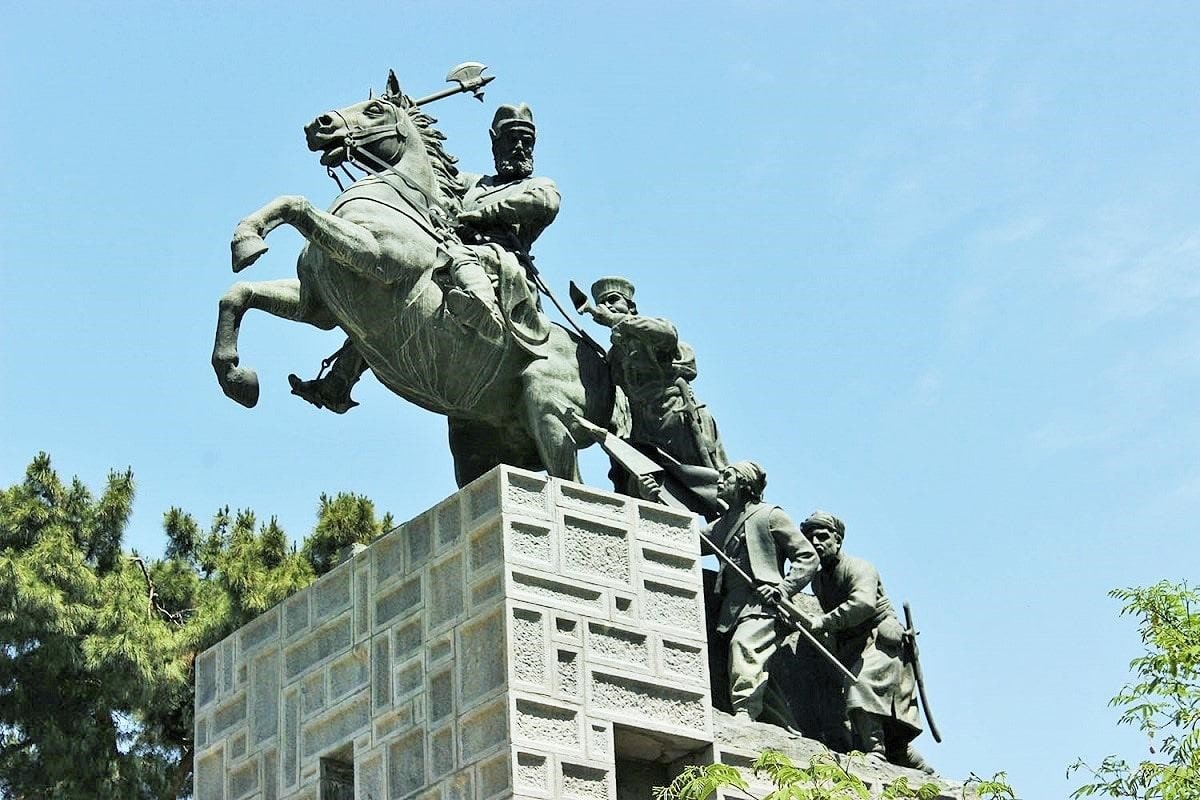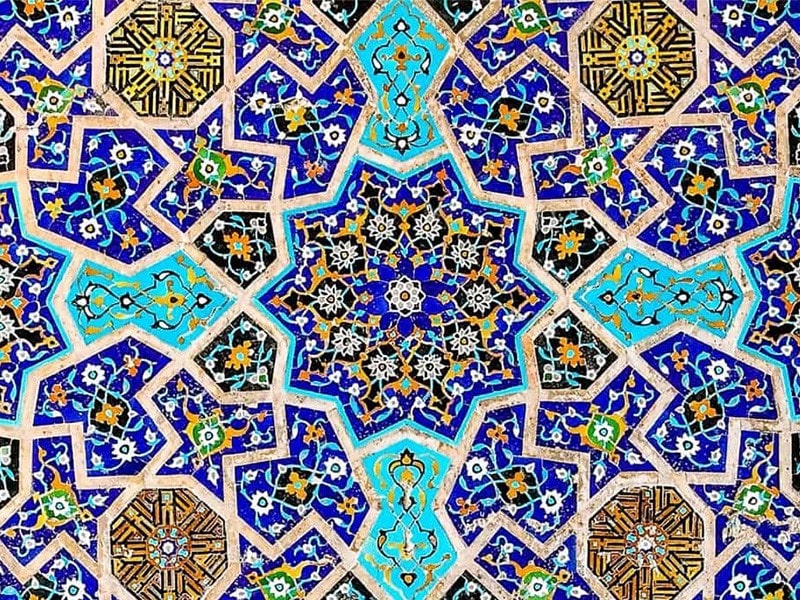
Iranian art and architecture have always attracted a lot of enthusiasts who appreciate authenticity and creativity in such realms. According to “Destination Iran”, Saeid Shakouri’s website has published some in-depth information regarding this topic and you read a short account of what he has published below here:
The Islamic era in Iran marks a period of immense artistic and architectural achievements, blending the country’s ancient cultural heritage with the principles of Islamic art. From the 7th century onwards, when Islam arrived in Iran, a fascinating fusion of Persian traditions and Islamic aesthetics emerged, giving rise to some of the most breathtaking monuments and artworks in history. In this article, we delve into the evolution of Iranian art and architecture during the Islamic era, exploring the cultural synthesis that has shaped the country’s artistic identity.
Foundations and Principles of Islamic Art
The arrival of Islam in Iran brought a new artistic paradigm influenced by the teachings of the Quran and Islamic principles. Islamic art is characterized by aniconism, where religious imagery of human figures and animals is eschewed in favor of abstract and geometric motifs. This emphasis on geometric patterns, calligraphy, and arabesques would go on to play a pivotal role in shaping Iranian art and architecture. You can see Islamic art patterns in a lot of monuments in Iran.
Persian Influence: Continuity of Cultural Traditions
Despite the Islamic influence, Persian artistic traditions remained vibrant and influential throughout the Islamic era. Iranian artists and craftsmen continued to draw inspiration from ancient Persia, incorporating elements of pre-Islamic art, such as Zoroastrian symbols and motifs, into their works. Persian literature, poetry, and mythology also found their way into artistic expressions, enriching the cultural tapestry of Islamic-era Iran.
Mosque Architecture
Mosques hold a special place in Islamic architecture, serving as places of worship and centers of community life. Iranian mosques exemplify the harmony between Persian and Islamic architectural aesthetics. Intricate tilework, elaborately designed domes, and stunning minarets adorn these structures, reflecting the mastery of geometric patterns and the use of calligraphy to embellish religious spaces.
The Magnificent Isfahan
Isfahan is a symbol of Persian-Islamic splendor. The city of Isfahan stands as a testament to the grandeur of Persian-Islamic art and architecture. During the Safavid dynasty in the 16th and 17th centuries, Isfahan became a flourishing center of art and culture. The iconic Naqsh-e Jahan Square, surrounded by the Imam Mosque, Sheikh Lotfollah Mosque, and Ali Qapu Palace, exemplifies the synthesis of Persian and Islamic architectural styles, creating a harmonious urban space.
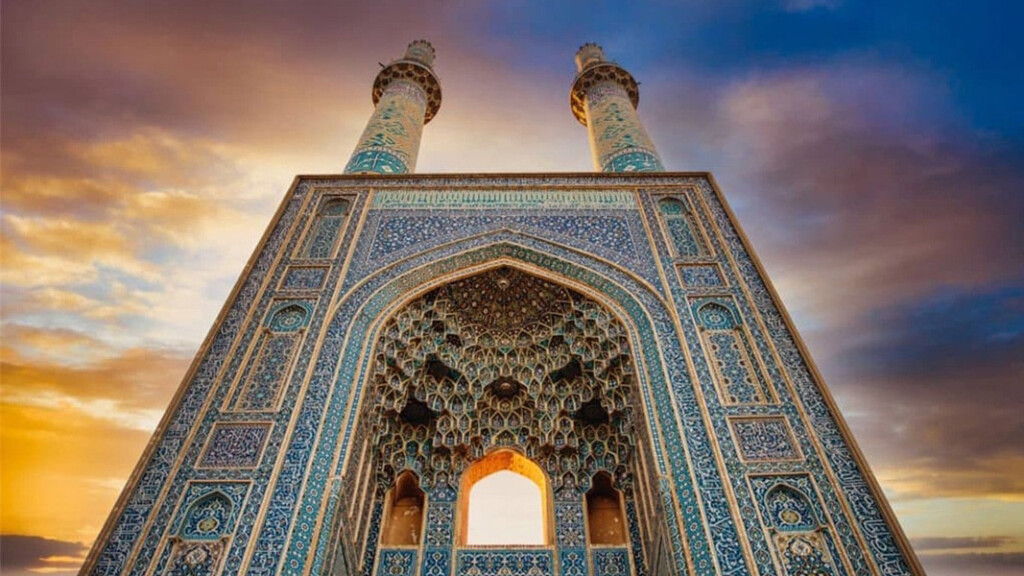
Persian Miniature Painting
Persian miniature painting flourished during the Islamic era, becoming a hallmark of artistic expression in Iran. These intricate paintings, often adorned with involved borders and poetic inscriptions, depicted scenes from Persian epics, courtly life, and Islamic history. Persian miniature artists combined their technical mastery with religious themes, creating an artistic genre that was both captivating and spiritually evocative.
Calligraphy or Artistry in Words
Islamic calligraphy, an essential aspect of Persian art, transformed writing into an art form. Persian calligraphers mastered various scripts, such as Naskh, Thuluth, and Nasta’liq, which adorned mosques, manuscripts, and public spaces. The marriage of religious verses and poetic expressions in mesmerizing calligraphy continues to be celebrated as an exquisite form of artistic expression.
Architectural Innovations in the Persian Garden
The Persian Garden, another testament to the brilliance of Iranian architecture, was inscribed as a UNESCO World Heritage Site. Combining ancient Persian landscaping techniques with Islamic principles, these gardens offered a tranquil sanctuary with a deep symbolic meaning, reflecting the harmony between humanity and nature.
Safeguarding Iran’s Cultural Heritage
Preserving Iran’s artistic and architectural heritage is of paramount importance in the modern era. The country’s rich history and cultural legacy are susceptible to various challenges, including natural disasters, urbanization, and inadequate conservation efforts. To protect these invaluable treasures, Iran has made significant strides in safeguarding its cultural heritage.
Governmental organizations, such as the Iranian Cultural Heritage, Handcrafts, and Tourism Organization (ICHTO), play a crucial role in overseeing conservation projects, conducting research, and promoting cultural awareness. Collaborations with international organizations and institutions also contribute to the preservation and restoration of Iran’s historical sites and artworks.
Revival of Traditional Artistic Techniques
As modernity and globalization continue to impact the world, there has been a growing interest in reviving traditional artistic techniques and craftsmanship. Many artisans and artists in Iran are dedicated to preserving ancient methods of artistry, such as carpet weaving, pottery, metalwork, and tile-making. These endeavors ensure that the knowledge and skills of traditional art are passed down to future generations.
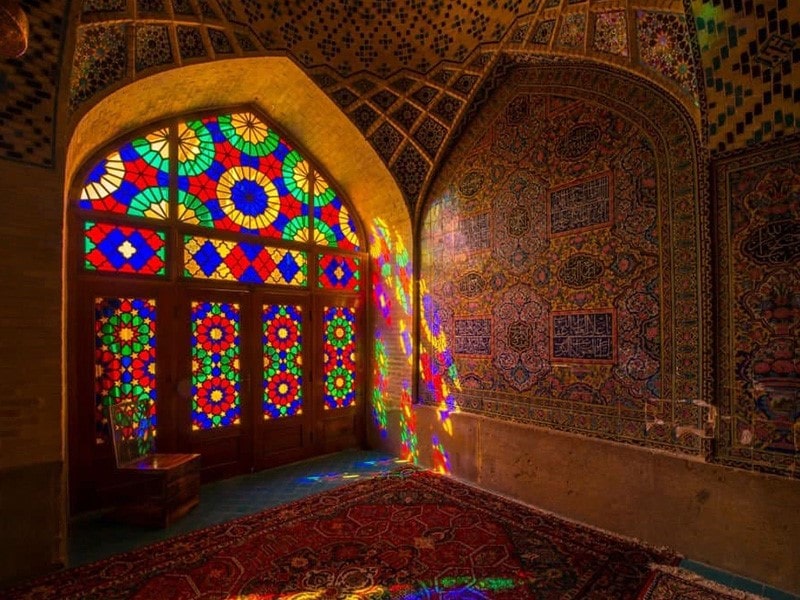
Contemporary Artistic Expression
Iran’s rich artistic heritage continues to inspire contemporary artists who draw from both traditional and innovative sources. Modern Iranian art encompasses a wide range of mediums, from paintings and sculptures to digital art and installations. Artists often explore themes such as identity, social issues, and spirituality, demonstrating the ongoing relevance and evolution of Iranian artistic expression.
Cultural Tourism: Exploring Iran’s Artistic Treasures
Iran’s artistic and architectural gems have become magnets for cultural tourism. The country’s rich heritage and historical sites draw visitors from around the world, seeking to immerse themselves in the splendor of Iran’s past. From the opulent palaces of ancient Persia to the intricately adorned mosques and vibrant bazaars, cultural tourists embark on a journey through time, discovering the captivating stories embedded in each artistic masterpiece.
Cultural tourism not only generates economic benefits for local communities but also fosters cultural exchange and mutual understanding. Visitors from different backgrounds engage with Iran’s art and architecture, forging connections and dispelling misconceptions, thus promoting cross-cultural dialogue and appreciation.
Art Education and Scholarly Pursuits
Iran’s artistic legacy serves as a wellspring of inspiration for art education and scholarly pursuits. Universities and institutions worldwide offer courses and programs dedicated to the study of Persian art, history, and architecture. Scholars and researchers delve into the intricacies of Islamic-era Iranian art, contributing to a deeper understanding of its cultural significance and impact on the broader artistic landscape. If you want to learn how to draw Islamic geometric patterns, you can check out the Saeidshakouri website.
Embracing Artistic Diversity
Iranian art and architecture of the Islamic era exemplify the diversity of artistic expressions within the broader Islamic world. Each region and dynasty that thrived in Iran brought its unique style and cultural nuances to the artistic heritage. The art of the Safavids, the Qajars, and other dynasties showcase the dynamic and ever-changing nature of Iran’s artistic identity.
Embracing this diversity is essential, as it reflects the richness of Iran’s historical experiences and the resilience of its artistic traditions.
Bridging the Past and Present
The Iranian art and architecture of the Islamic era bridge the past and present, reminding us of the enduring connection between humanity and creativity. As modern society grapples with rapid changes, these artistic masterpieces serve as a reminder of the timeless beauty and significance of artistic expression.
As we explore the awe-inspiring architectural wonders and artistic creations of the Islamic era, we are reminded of the shared human experience that transcends time, borders, and cultural divides. Iran’s artistic legacy continues to inspire, captivate, and connect people from all corners of the world, reaffirming the power of art to unite, uplift, and celebrate our shared humanity.
The Spiritual Essence of Iranian Art
At the heart of Iranian art and architecture in the Islamic era lies a deep spiritual essence. From the intricate calligraphy adorning religious texts to the magnificent mosque domes reaching toward the heavens, every artistic creation carries a profound sense of devotion and reverence.
Islamic art, including Iranian art, reflects the spiritual connection between the artist and the divine. Calligraphers, painters, and architects often regarded their work as a form of worship, seeking to glorify the Creator through their creative endeavors. This spiritual aspect infuses the art with a sense of transcendence, inspiring awe and contemplation among both creators and audiences.
Artistic Resilience Amid Historical Challenges
The Islamic era in Iran witnessed its fair share of challenges, including invasions, political turmoil, and social changes. Despite these upheavals, Iranian art and architecture exhibited remarkable resilience, with artists continuing to produce masterpieces that reflected the tenacity and perseverance of the people.
The Role of Women in Iranian Art
Throughout history, women have been influential contributors to Iranian art and craftsmanship. In Islamic-era Iran, talented female artists and artisans played significant roles in creating miniature paintings, weaving carpets, and crafting intricate designs. Their contributions enriched the artistic landscape and challenged traditional gender roles, paving the way for women to gain recognition in the art world.
Iranian Art in a Global Context
Iranian art and architecture in the Islamic era have transcended regional boundaries, gaining recognition as essential components of world art history. Exhibitions and cultural exchanges showcase the brilliance of Iranian artistic expressions to audiences far beyond the country’s borders. Renowned museums and galleries around the world display Persian artifacts, contributing to the appreciation and understanding of Iran’s artistic heritage.
As a global audience engages with Iranian art, the cultural synthesis evident in the artistic creations fosters mutual respect and admiration for diverse cultures and traditions.
Muqarnas in Iranian Artistic Innovations: Beyond Boundaries
Iranian art and architecture in the Islamic era were not limited to regional influences; they also showcased a spirit of innovation that left a lasting impact on the global artistic landscape. Iranian artisans and architects pushed the boundaries of creativity, introducing novel techniques and designs that influenced artistic traditions beyond their homeland.
One such innovation was the introduction of “Muqarnas,” a mesmerizing architectural element characterized by intricate stucco work that adorns the ceilings and vaults of mosques and palaces. The art of Muqarnas, with its unique three-dimensional geometric patterns, captivated artists across the Islamic world and became a signature feature of Iranian architecture.
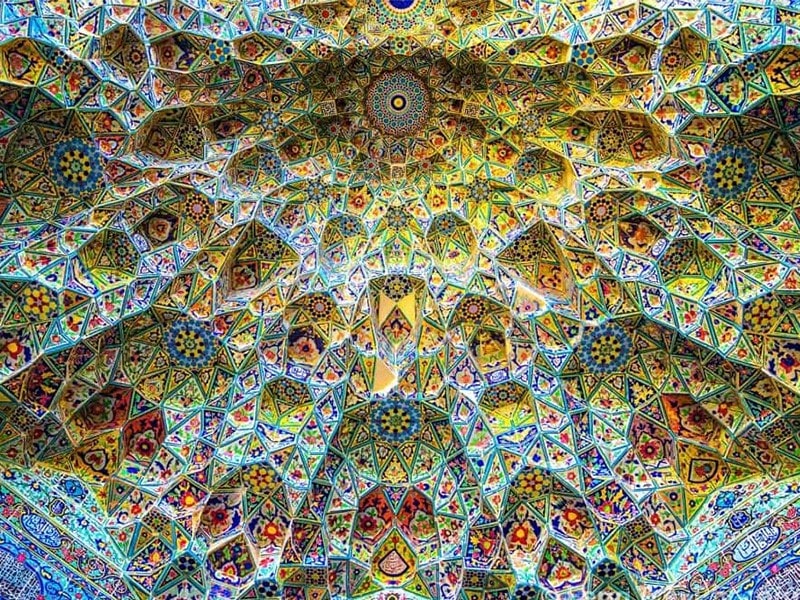
Scientific and Cultural Renaissance
Iran’s Islamic era coincided with a broader Islamic golden age, marked by significant advancements in science, philosophy, and culture. Scholars, scientists, and artists in Iran and other Islamic regions made groundbreaking contributions to fields such as mathematics, astronomy, medicine, and literature.
These intellectual achievements deeply influenced Iranian art, infusing it with a sense of intellectualism and the pursuit of knowledge. Artistic expressions often became intertwined with philosophical themes and spiritual reflections, elevating the significance of Iranian art beyond its visual appeal.
Architectural Symbolism and Social Cohesion
Iranian architecture in the Islamic era served as more than just impressive structures; it also conveyed symbolic messages and promoted social cohesion. The design of public spaces, such as bazaars and caravanserais, facilitated interactions among diverse groups of people, fostering cultural exchange and trade. Mosques and religious centers became the heart of communities, offering spaces for worship, education, and social gatherings.
Through thoughtful architectural planning, Iranian artists and architects contributed to the cohesion of society and the promotion of communal values.
The Global Legacy of Persian Carpets
Among the most renowned and coveted contributions of Iranian art to the world is the Persian carpet. Persian carpet weaving, with its intricate patterns and skilled craftsmanship, has a history spanning over 2,500 years. These exquisite works of art are not only visually stunning but also represent the enduring dedication of Iranian weavers to their craft.
Persian carpets have become cultural ambassadors, gracing homes, museums, and exhibitions worldwide. The art of carpet weaving has become a source of pride for Iranians, and the carpets themselves are cherished heirlooms that carry the legacy of generations.
Conclusion
The journey through Iranian art and architecture in the Islamic era unveils a tapestry of innovation, intellectualism, and cultural synthesis. From mesmerizing mosque domes to the timeless beauty of Persian carpets, each artistic creation reflects the enduring spirit of creativity and devotion to artistic excellence.
The legacy of Iranian art goes beyond geographic boundaries, captivating audiences worldwide and fostering cultural appreciation and intercultural dialogue. As we continue to celebrate and preserve this artistic heritage, we honor the shared history of humanity and the power of art to connect and inspire across time and place.
Iranian art serves as a testament to the universal nature of artistic expression, transcending differences and celebrating the beauty of cultural fusion. In the canvas of Iranian art, we find a timeless symphony that echoes the harmonious coexistence of diverse traditions and a celebration of the profound and unifying language of art.






